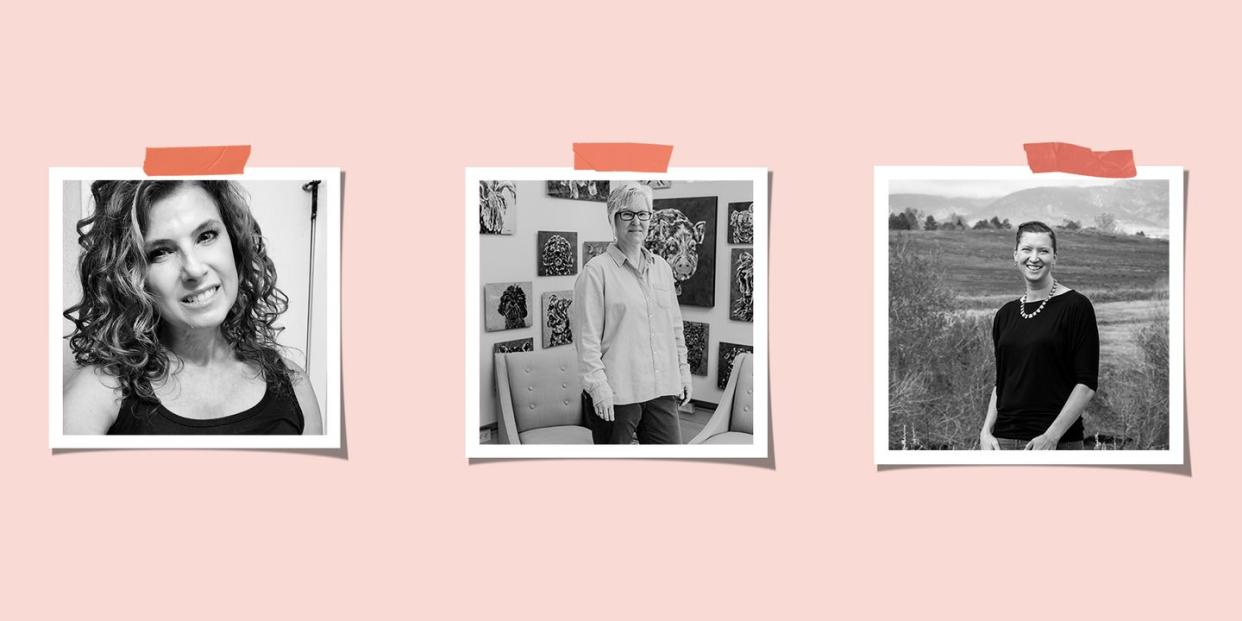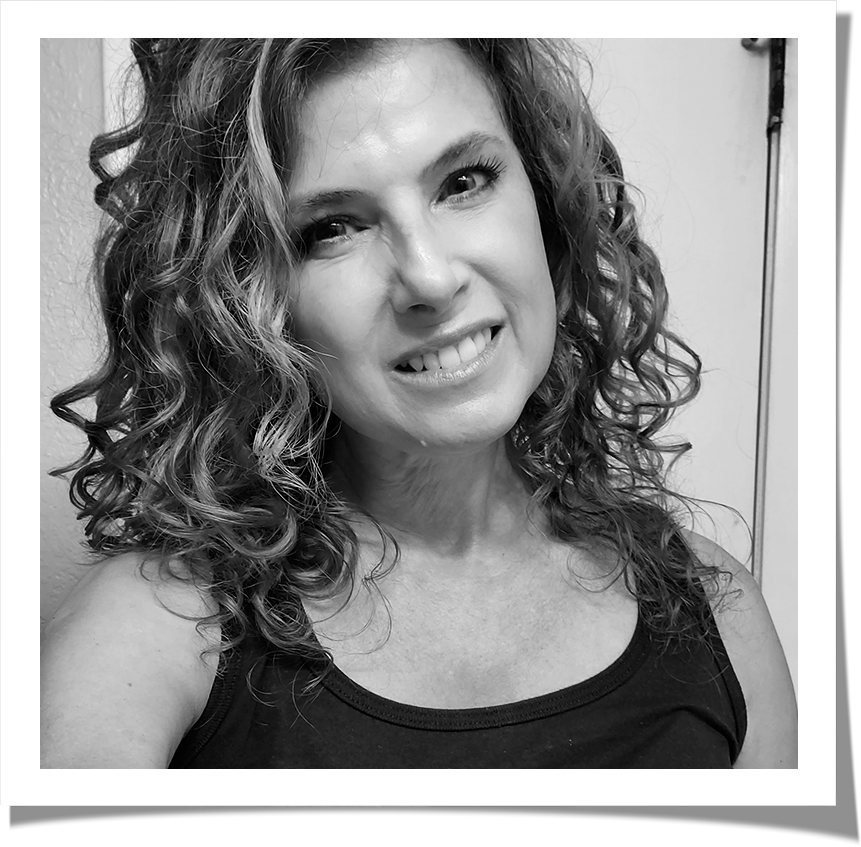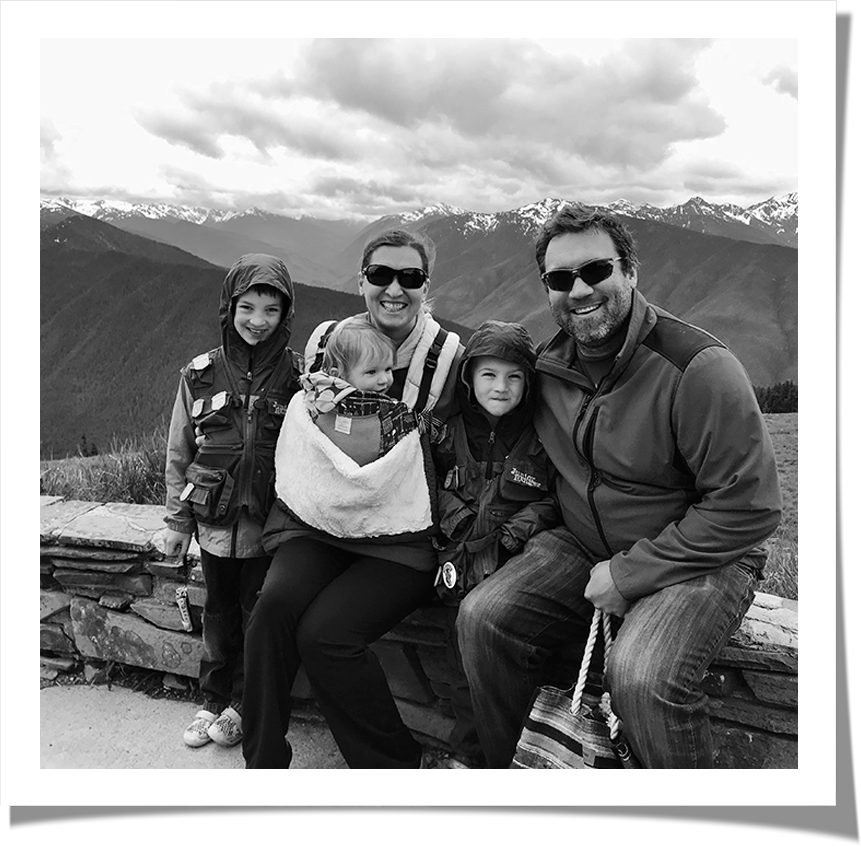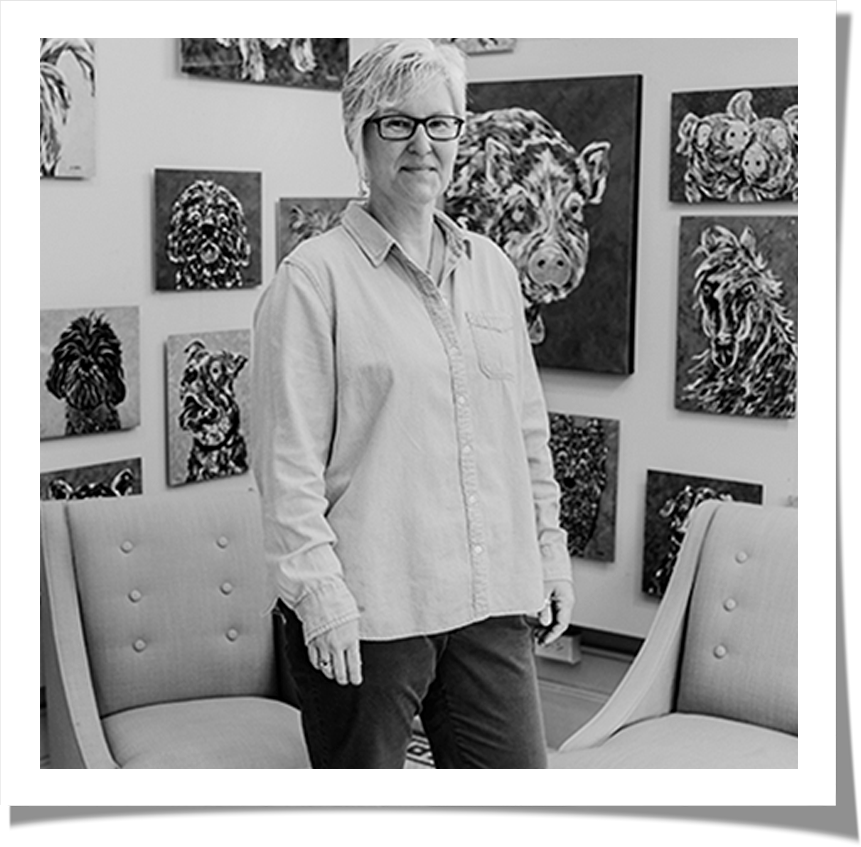3 Women Share What It's Really Like To Live With Chronic Joint Pain

While rheumatoid arthritis (RA) affects more than one million people in the United States, it’s a disease that can look very different from person to person. As a result of the immune system attacking healthy joints, RA can come on slowly or suddenly. It can cause joints to swell and appear misshapen or have no outward signs at all. It can affect organs or leave them alone. That’s why each person’s way of finding relief is so personal.
Here, three women with the disease share their approach to managing symptoms and continuing to do the things they love.
Kelly O’Neill, diagnosed at 41

As a teenager, Kelly O'Neill noticed joint problems that would come and go, but she always wrote it off as not that big of a deal. “It was always one joint at a time and felt like I’d injured myself, but I didn’t know how,” she says. “I would bring up the joint pain whenever I had a checkup and would mention that my grandfather had rheumatoid arthritis, but my doctors would always say I definitely didn’t have it.”
It wasn’t until 15 years ago, right after Kelly had her last child at age 40, that the symptoms became full-blown. “It felt like a long line of dominos where one joint was affected, then another, then another, until all of them were,” she says “And the pain didn’t flare up and go away, it was constant every day.” It took a year to figure out what was going on, but right around her youngest’s first birthday, she received the diagnosis of RA.
Her tips for feeling better
Do any activity you can every day.
“There was a time I could barely stretch my arms or legs, but I would still move them as much as I could,” she says. “If you can walk, walk. If you can play tennis, play tennis. Don’t let any opportunity to move your body go by.”
Prioritize rest.
“I’m so protective of my sleep and plan it into my day,” she says. “I’m naturally a night owl, but living that way doesn’t help my symptoms. So instead, I set a bedtime and stick with it, turning [my devices] off by 9 pm and winding down.”
Minimize what you can.
“I only wash my hair once a week and use dry shampoo the other days since grooming can be painful,” she says. “I also got a new computer that I’m training for voice recognition to cut down on how much typing I have to do.”
Help others if you can.
Kelly discovered a desire to help others with the disease, which led her to found a nonprofit and write a book, Rheumatoid Arthritis Unmasked. “This disease is very hard to live with—even those with mild cases live in fear of their disease progressing,” she says.
Mariah Leach, diagnosed at 25

It only took a few months for Mariah to get an RA diagnosis after her first symptoms appeared. “I was 25 and started having pain in my toes, then my wrists and fingers,” says Mariah, now 37. “My knees swelled to the size of grapefruits—I knew something was very strange and very wrong.” At the time, Mariah had just started law school and was all of a sudden dealing with a life-changing diagnosis.
Her tips for feeling better
Create helpful routines.
“I’m sore and slow moving when I wake up, so my family’s morning routine has adapted to give me more time,” she says. “My husband deals with the kids, getting them breakfast and dressing them, which gives me more time to move slowly and get going.”
Learn your limits.
“I used to try to push on with my life as usual, but that wasn’t working for me,” she says. “I am now more careful about my energy levels, and that’s one reason I don’t flare as much as I used to. I don’t have to be the mom at school who is involved in everything because I have different limits than other people. Taking care of myself is taking care of my family.”
Be open with your kids.
“This disease will impact my kids’ lives one way or the other,” she says. “My kids are now two, five, and seven years old, and I won’t always be able to do what they want me to do. Explaining my health to them is an ongoing discussion, and whenever it comes up, I offer some information and answer questions. It’s not all negative, either. I like that they’re learning to be grateful for what you can do and not judge someone by how they look, because they know I have pain they can’t see. I hope these are lessons they take out into the world with them.”
Angela Alexander, diagnosed at 41

As a painter, Angela has always relied on her hands. In 2013, when she started noticing numbness in her hands, she just thought she had carpal tunnel syndrome. “I was painting for shorter and shorter periods of time and would get so frustrated, I didn’t know what was going on,” she says. After seeing multiple doctors, she finally found a rheumatologist who listened to her and observed her symptoms over several months before giving her an RA diagnosis.
Her tips for feeling better
Stay flexible.
“I used to paint in a pop art style that required outlining everything with a tiny brush, but I can’t do that with my RA,” says Angela. “I could have kept pushing myself to paint how I’ve always painted, but it wasn’t worth it. So I stopped doing the outlining and kept using bigger and looser brush strokes and found a new style.”
Find what movement feels right.
“Yoga works for some with RA, but it just caused me more pain, so I gave Qigong a try,” she says. “It’s gentle and fluid, and you do deep breathing with it—it’s really helped my body feel better.”
Learn what you can let go of.
“I used to love to garden, but I can’t dig and plant anymore and I had to accept that,” she says. “It’s okay because I’m still painting, which is my real passion.”
You Might Also Like

